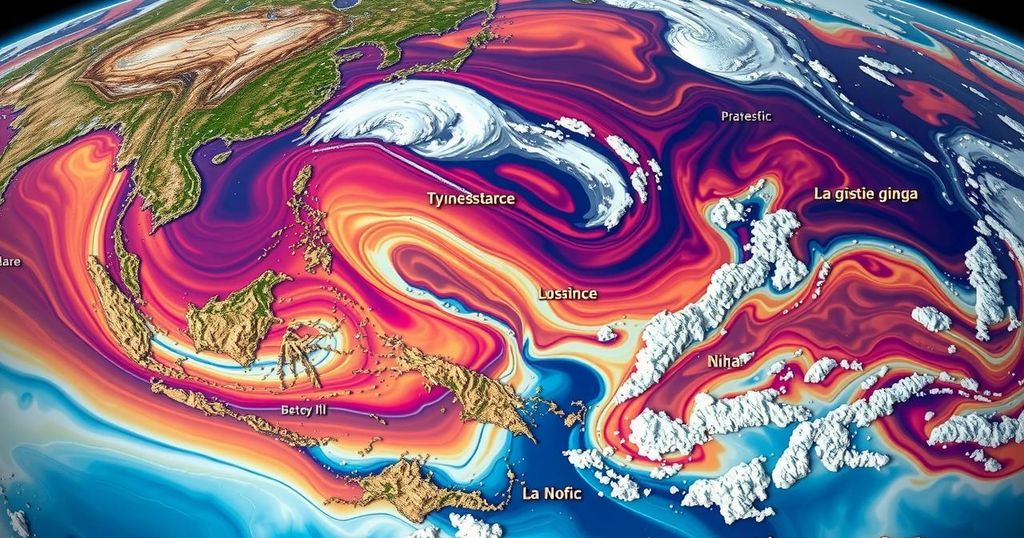La Niña Emerges in the Pacific, Signaling Global Weather Shifts

The La Niña phenomenon has officially developed in the equatorial Pacific, influencing global weather patterns. Ocean temperatures have cooled significantly, which may lead to increased storms in the Pacific Northwest and drier conditions in southern U.S. regions. Additionally, it poses drought risks in Argentina and Brazil, while enhancing rainfall across parts of Indonesia and Australia. Forecasters predict a high likelihood that La Niña conditions may ease by early spring 2025.
After a prolonged period of observation, the highly anticipated La Niña phenomenon has officially manifested in the equatorial Pacific, as reported by the U.S. Climate Prediction Center. This cooling event, characterized by ocean surface temperatures dropping 0.9°F (0.5°C) below normal, poses significant implications for weather patterns across the globe. Michelle L’Heureux, a forecaster at the Climate Prediction Center, noted that the cooling must accompany atmospheric changes to confirm La Niña’s emergence. In the United States, this will likely result in increased storm activity in the Pacific Northwest while leaving southern regions, particularly California, experiencing drier conditions, and the northern Great Plains will endure cooler temperatures. Furthermore, La Niña may elevate drought risks in agricultural sectors within Argentina and Brazil, while fostering heavier rainfall across Indonesia and northern Australia. Although the cooling process has been gradual, L’Heureux conveyed a cautious outlook, indicating a 60% probability that these La Niña conditions could diminish by the spring months of March, April, and May.
La Niña is part of a broader climate pattern that also includes El Niño, wherein variations in ocean temperatures in the Pacific Ocean significantly influence global weather. Typically characterized by cooler ocean temperatures in the equatorial Pacific, La Niña affects the atmospheric changes that lead to modified weather patterns worldwide, creating potential impacts on agriculture, water supply, and climate stability. Recent predictions had anticipated this development for much of 2024, culminating in the official declaration of La Niña as a significant climate event.
In summary, La Niña’s emergence marks a pivotal shift in global weather patterns, with considerable implications for rainfall distribution and drought risk across various regions, particularly affecting southern U.S. states, agricultural areas in South America, and parts of Southeast Asia. As forecaster Michelle L’Heureux stated, despite its delayed onset, it is crucial to monitor La Niña’s progression, as there exists a significant chance of its diminishment in the coming months, concluding this climate cycle’s immediate effects.
Original Source: www.energyconnects.com






